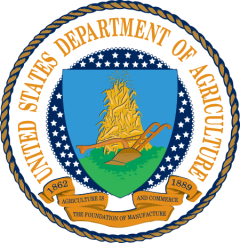USDA: The Big Three, part 16
On Fridays, USDA continues to share the CDC’s COVID-19 community levels to guide masking protocols for the following week. This week, 2,910 counties are LOW, 258 counties are MEDIUM and 56 counties are HIGH. Washington, DC, has moved from MEDIUM to LOW this week. The CDC COVID Community Levels and masking protocols for the week of Sunday, May 1, through Saturday, May 8, are here.
The CDC continues to recommend that people wear masks in all indoor public transportation settings. Wearing masks is most beneficial in crowded or poorly ventilated locations. When people wear a well-fitting mask or respirator over their nose and mouth in indoor travel or public transportation settings, they protect themselves, and those around them, including those who are immunocompromised or not yet vaccine-eligible, and help keep travel and public transportation safer for everyone.
For additional information see the latest versions of the Safer Federal Workforce Task Force Guidance on masking, the USDA COVID-19 Workplace Safety Plan, and our Frequently Asked Questions on USDA’s Response to COVID-19 Workplace Safety.
This week, we have included two COVID-19-related questions and one “tip of the week” related to the return to the physical workplace.
1. Who will be enrolled in the screening testing program?
USDA has finalized its screening testing program guidance. USDA employees who have not submitted proof they are fully vaccinated will be enrolled in their agency’s screening testing program and will receive additional communication directly from their agency. Employees enrolled in the screening testing program will be tested each week that they are required to work onsite in a federal building or worksite that is located in a county where the COVID-19 Community Level is medium or high, as required by the Safer Federal Workforce Task Force guidance.
Employees may submit proof of vaccination, including booster shots. Employees should contact their supervisor or pandemic coordinator with questions about submitting proof of vaccination.
2. As supervisors and employees begin returning to the physical workplace, what should they know about cleaning and disinfection?
USDA follows CDC guidance on cleaning and disinfection. CDC guidance indicates that routine cleaning once a day is usually enough to sufficiently remove viruses that may be on surfaces and help maintain a healthy facility. High-touch surfaces should be cleaned at least once a day or as often as determined is necessary. Examples of high-touch surfaces include pens, counters, shopping carts, tables, doorknobs, light switches, handles, stair rails, elevator buttons, desks, keyboards, phones, toilets, faucets and sinks.
3. As employees begin their return to the worksite and more in-person meetings are scheduled, it is important to develop a plan for inclusive meetings that allow everyone to participate fully—regardless of whether they are working on-site, teleworking or are remote workers. Here are a few ideas based upon lessons learned from USDA agencies:
- Look at the in-person meeting space and identify if any changes are needed. For example, does the television monitor need to be adjusted so that teleworking and remote workers feel more like they are in the meeting space?
- Build-in preparation time to ensure meeting spaces are logged into Teams before a meeting starts. Identify one person to be responsible for logging into Teams and testing out the camera and microphone within the meeting space.
- Build in transition time between meetings to allow all attendees to take short breaks or travel between meetings. Examples include:
- Scheduling 45-minute meetings as opposed to one-hour meetings
- Starting meetings at 5 minutes after the hour. For example, instead of a meeting start at 10 am, the meeting starts at 10:05 am.
- Take the time to learn what is working and not working on hybrid meetings. Set aside a few minutes at the end of the meeting to debrief on meeting logistics.
- Discuss norms about whether cameras need to be on for meetings. A new study shows that turning cameras off for video meetings makes you more productive and less tired. Further, the study indicates that using a camera during virtual meetings will be more fatiguing for women and newer members of the organization. In some cases, having cameras on may be beneficial and may result in creating rapport and engage with colleagues, such as one-on-one check ins between supervisors and direct reports or virtual retreats and working sessions.
The Big Three: Part 15
To the extent this policy may constitute a change in a condition of employment for bargaining unit employees, agencies/offices will implement it in accordance with the terms of their current labor agreement and 5 U.S.C. Chapter 71. If you are a bargaining unit employee and have questions regarding the content of this message and its potential impact on a current labor agreement, please refer them to your local union representative.

